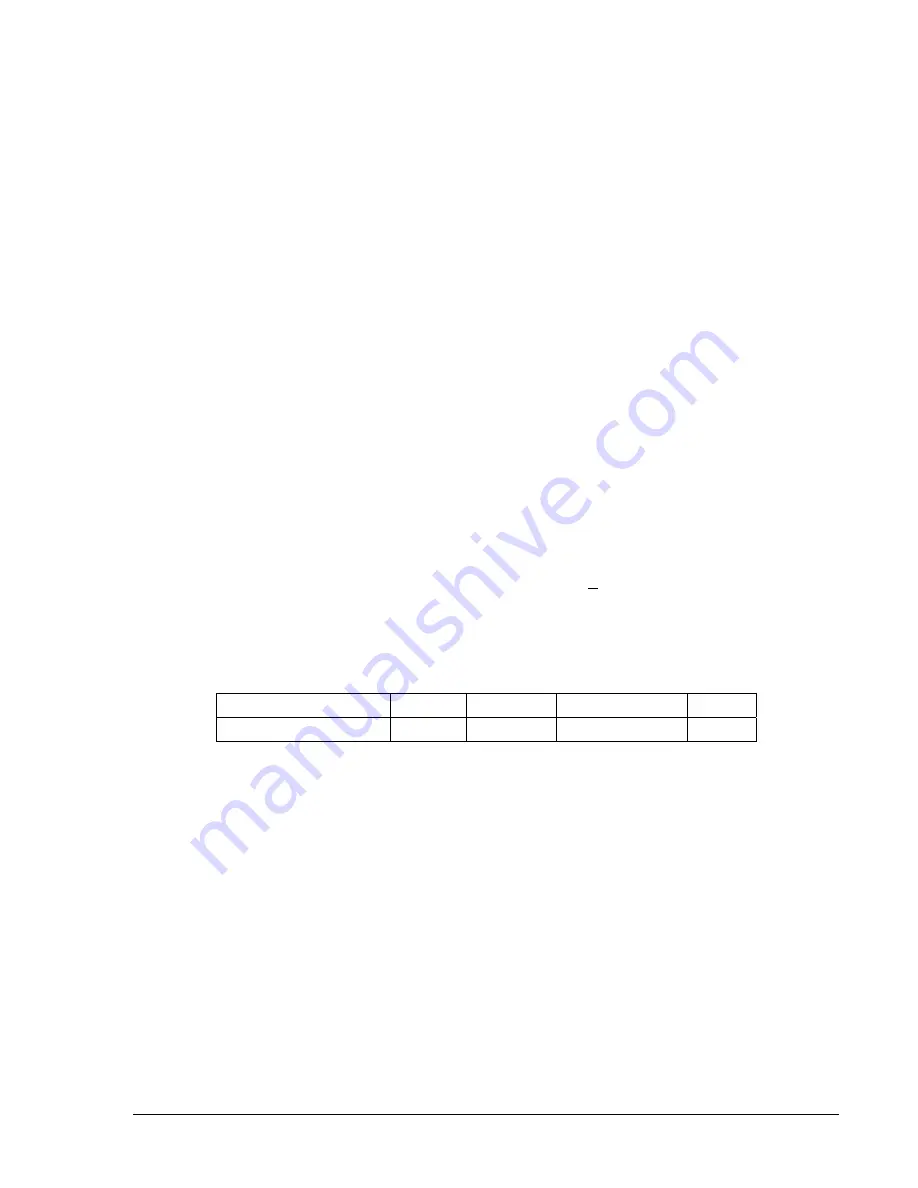
9365200990 Rev F
BE1-CDS240 Reporting and Alarm Functions
6-13
MEASURED SEC I
CT CKT1 0.42 @ 0 0.42 @ 240 0.42 @ 120
CT CKT2 1.01 @ 180 1.01 @ 60 1.01 @ 300
CT CKT3 0.52 @ 151 0.52 @ 31 0.52 @ 271
CT CKT4 0.14 @ 180 0.14 @ 60 0.14 @ 300
ANGLE COMPENSATED I
CT CKT1 0.42 @ 330 0.42 @ 210 0.42 @ 90
CT CKT2 1.01 @ 150 1.01 @ 30 1.01 @ 270
CT CKT3 0.52 @ 151 0.52 @ 31 0.52 @ 271
CT CKT4 0.14 @ 150 0.14 @ 30 0.14 @ 270
TAP COMPENSATED I
CT CKT1 0.21 @ 330 0.21 @ 210 0.21 @ 90
CT CKT2 0.13 @ 150 0.13 @ 30 0.13 @ 270
CT CKT3 0.03 @ 151 0.03 @ 31 0.03 @ 271
CT CKT4 0.07 @ 150 0.07 @ 30 0.07 @ 270
I OPERATE 0.01 * TAP 0.01 * TAP 0.01 * TAP
SLOPE RATIO 1 % 1 % 1 %
Setting Differential Current Monitoring Alarms
The differential function continuously monitors the input current in CT Circuits 1, 2, 3, 4, 5, or 6. If a
mismatch due to current loading is approaching the trip level, the differential alarm may be activated. This
alarm is alarm point number nine in the relay programmable alarms. The alarm point must be mapped to
activate an alarm and/or light an LED. For more information on mapping the alarm functions, see
Alarms
Function, Major, Minor, and Logic Programmable Alarms
later in this section. The differential alarm is set
as a percentage of the percentage restrained differential characteristic. See Figure 6-5 for a graph
showing the percentage restrained differential and differential alarm characteristics. To set the differential
alarm threshold level, use BESTCOMS (Figure 6-6). Pull down the
Screens
menu and select
Differential
Protection.
Select the
Diff Alarm
tab. Alternately, settings can be made using ASCII command SA-DIFF
(setting alarm, differential). This setting is not available via the front panel HMI. Table 6-7 summarizes the
differential alarm threshold setting.
Table 6-7. Differential Alarm Threshold Setting
Function
Range
Increment
Unit of Measure Default
Differential Alarm Level
50 – 100
1
Percent (%)
67
Retrieving Differential Current Monitoring Information
To retrieve the differential check record, use the ASCII command RA-DIFF.
Summary of Contents for BE1-CDS240
Page 2: ......
Page 8: ...vi BE1 CDS240 Introduction 9365200990 Rev F This page intentionally left blank ...
Page 38: ...1 28 BE1 CDS240 General Information 9365200990 Rev F This page intentionally left blank ...
Page 40: ...ii BE1 CDS240 Quick Start 9365200990 Rev F This page intentionally left blank ...
Page 152: ...ii BE1 CDS240 Metering 9365200990 Rev F This page intentionally left blank ...
Page 226: ...iv BE1 CDS240 Application 9365200990 Rev F This page intentionally left blank ...
Page 286: ...ii BE1 CDS240 Security 9365200990 Rev F This page intentionally left blank ...
Page 290: ...9 4 BE1 CDS240 Security 9365200990 Rev F This page intentionally left blank ...
Page 292: ...ii BE1 CDS240 Human Machine Interface 9365200990 Rev F This page intentionally left blank ...
Page 306: ...10 14 BE1 CDS240 Human Machine Interface 9365200990 Rev F This page intentionally left blank ...
Page 308: ...ii BE1 CDS240 ASCII Command Interface 9365200990 Rev F This page intentionally left blank ...
Page 342: ...11 34 BE1 CDS240 ASCII Command Interface 9365200990 Rev F This page intentionally left blank ...
Page 349: ...Figure 12 5 Horizontal Rack Mount Front View 9365200990 Rev F BE1 CDS240 Installation 12 5 ...
Page 361: ...Figure 12 17 Typical DC Connection Diagrams 9365200990 Rev F BE1 CDS240 Installation 12 17 ...
Page 372: ...12 28 BE1 CDS240 Installation 9365200990 Rev F This page intentionally left blank ...
Page 468: ...13 92 BE1 CDS240 Testing and Maintenance 9365200990 Rev F This page intentionally left blank ...
Page 512: ...14 42 BE1 CDS240 BESTCOMS Software 9365200990 Rev F This page intentionally left blank ...
Page 544: ...ii BE1 CDS240 Terminal Communication 9365200990 Rev F This page intentionally left blank ...
Page 550: ...ii BE1 CDS240 Settings Calculations 9365200990 Rev F This page intentionally left blank ...
Page 578: ...D 28 BE1 CDS240 Settings Calculations 9365200990 Rev F This page intentionally left blank ...
Page 579: ......
















































